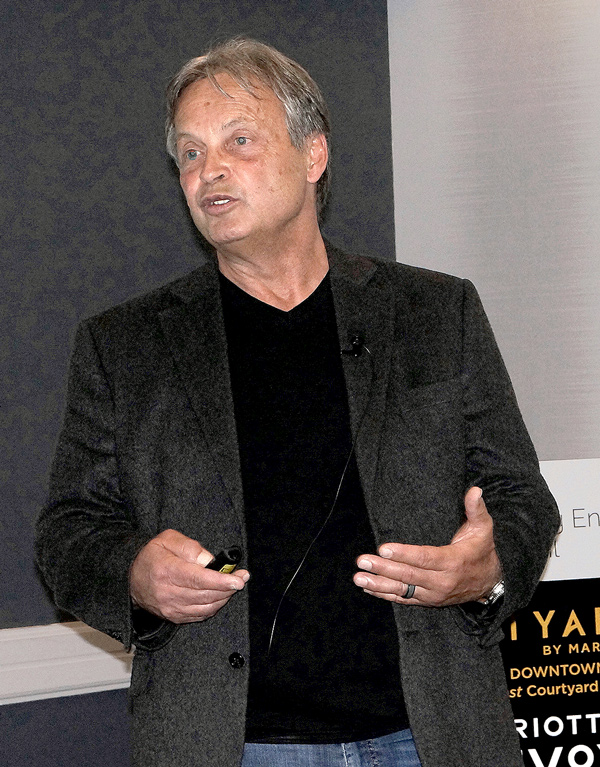Joe Lstiburek is a guru of the building science world, but he candidly admits to plenty of design gaffes over the span of his career starting in the 1980s in Ontario.
Take his motorized exterior insulated window flaps as an example. When opened on a cold winter’s day, the rapid temperature swing caused windows to crack. R-15 rated shades on the interior produced the same results.
“It was a colossally-stupid thing to do,” he told an evening seminar recently at the Ontario Building Envelope Council (OBEC) in Toronto.
The owner of Boston-based Building Science Corporation who has never shied from testing design ideas in the field, said while design errors have been humbling, they have been important learning experiences.
Lstiburek, who saw problems coming with early face-sealed exterior insulated finishing systems that ultimately caused rot from moisture buildup in wall cavities, said decades ago he added insulation to a wall cavity without realizing it would cause moisture build-up, leading to paint failure on exterior siding.
It was a lesson “that there is no such thing as a free thermodynamic lunch.”
There were other lessons.
An airtight building clad in synthetic stucco was so airtight that the fireplace would not work without opening a window.

A “newfangled air-to-air heat exchanger” used to pre-condition incoming air by running it through tubes in the ground was “the dumbest thing” to do because the cold tubing combined with high interior temperatures in summer created condensation leading to mold, he told the OBEC audience.
Lstiburek is no stranger to roofing design errors leading to moisture woes, and before the advent of control joints (to allow for material contraction/expansion) he discovered nature’s version of joints: “cracks.”
The building science consultant, who “paid for and fixed” all of his mistakes, said it is a fallacy that high performance, low-energy buildings are easy to build and less expensive in the long run than conventional designs. “It doesn’t mean we shouldn’t do them, I think we should,” he said.
But designers need to carefully evaluate the impact of new materials on overall building performance.
“New materials have different properties from old materials and they can’t be used the same way. If I am going to reduce the drying potential (with new materials), I have to reduce the wetting potential,” said Lstiburek.
Along his path to better design, Lstiburek discovered there are only two kinds of windows: ones that leak and ones that will leak. Pan flashing installed below windows collects and directs water leaks out to the exterior.
“When an energy efficient assembly gets wet, there isn’t energy available to evaporate it.”
He said using OSB, rather than plywood in exterior wall construction, changes wetting and drying characteristics because unlike plywood, OSB is not “vapor open (permeable). When we changed kraft facing to polyethylene (vapor barrier), the walls could not dry to the inside.”
Another industry mistake was applying synthetic plastic housewraps to the back of face-sealed synthetic stuccos. “You lost (moisture) drainage and water repellency,” he said.
Lime-based stuccos were moisture permeable but later developments of Portland cement-based and polymer modified stuccos such as those specified on many new condos in Vancouver in the 1990s were not, he said.
“We changed the permeance, we changed the drainage, we changed the energy flow and we were unable to dry to the inside. And what happened? We rotted Vancouver to the ground,” he said.
“We’re not building things out of thousand-year-old trees and rocks anymore and we are changing energy flow so everything has to change. You have to test, push, measure and see things in the real world to establish the boundary conditions for the calculation world.”
In times past “when we were building a crappy building” that leaked, it was easier to deal with because moisture would simply evaporate in both directions through energy exchange.
He said the building/design world is prone to be “reactive, not proactive: Things become intolerably bad before we intervene. It shouldn’t be that way.”











One of the most pithy (and certainly memorable) things I ever heard Joe say in a session on moisture and pressure differentials was, “Buildings should blow, not suck.”